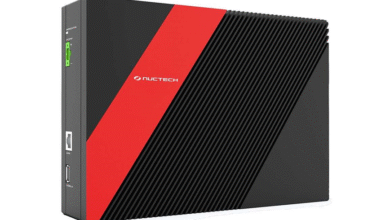How Variable Fonts Introduces A New Era In Typography

Variable fonts are revolutionising digital typography. Unlike traditional font families that rely on separate font files for each style or weight, variable fonts compress an entire typeface’s range—weights, widths, slants—into a single file. Users can access any variation through interpolation, creating an almost infinite spectrum of typographic expression.
About Variable Fonts
Variable fonts are transforming the way designers approach typography by combining multiple font styles—such as weights, widths, and slants—into a single, flexible file. This innovation allows for seamless adaptability across different devices and screen sizes, improving both design responsiveness and website performance.
TypeType, a leading foundry, offers a collection of 17 variable fonts crafted to suit a wide range of design tasks, from branding to editorial work. With fonts like TT Firs Neue, TT Hoves Pro, and TT Octosquares available in variable formats, designers can achieve fine-tuned control over text appearance without the burden of loading multiple static files. As variable font support grows across major operating systems and browsers, their use is quickly becoming a standard for modern digital typography.
See also: Exploring the Role of 7737025564 in New Age Tech Solutions
What Makes Variable Fonts Special
Here is what makes variable fonts special:
Unified File, Multiple Styles
One variable font file encapsulates what would traditionally be dozens of individual fonts. This consolidation can dramatically reduce the payload for websites and apps while maintaining stylistic flexibility .
Continuous Controls
Designers can adjust a font’s weight, width, or slant using CSS custom properties or UI sliders. This adaptability supports fluid, responsive design across devices and contexts .
Better Performance
With dozens of styles consolidated into one file, page load times improve. Users experience richer typographic variation, minus the performance penalty.
TypeType: 17 Variable Masterpieces
According to TypeType’s catalogue, they offer 17 variable fonts designed for versatility in editorial, branding, web, and UI design. While individual font names aren’t listed in search snippets, TypeType emphasises breadth—“any tasks and all tastes”—positioning their library as comprehensive and commercially ready.
Variable Fonts Beyond Latin Scripts
The Indian Type Foundry Variable Fonts Project, launched in 2019, extends the benefits of variable fonts to Indian scripts—Devanagari, Gujarati, Bengali, Tamil, Telugu—through fonts like Mukta Vaani VF, Teko VF, Baloo 2 VF, and Yatra One VF. These support axes like weight and width, facilitating responsive typography in South Asian contexts.
Why Designers Should Adopt Variable Fonts
Here is why designers should adopt variables fonts;
Flexibility & Responsiveness
Variable fonts allow designers to finely tune typography—making text lighter for print-like layouts, heavier for emphasis, or adjusting width for varying device sizes.
Reduced Maintenance
A single variable font file replaces multiple static files, simplifying font management and reducing load times.
Enhanced Accessibility
From larger x‑heights at small sizes to better contrast, variable axes empower better readability and accessibility.
Cross‑Script Consistency
Foundries investing in variable fonts for non-Latin scripts ensure global brands maintain consistent identity across languages.
A Bright Typographic Future
From TypeType’s 17 font offerings to open‑source champions like Inter, Adobe’s Source families, and multilingual solutions from Indian Type Foundry, variable fonts are reshaping typography. Their singular files, responsive design adaptability, and broad system support make them a cornerstone of modern typographic strategy.
Conclusion
So, variable fonts offer a compelling mix of performance, flexibility, and control. As browser support matures and more foundries embrace variable formats—including for non‑Latin scripts—the typographic world is poised to benefit from richer, more dynamic design possibilities than ever before. You can visit TypeType’s variable fonts collection to discover their full range.



